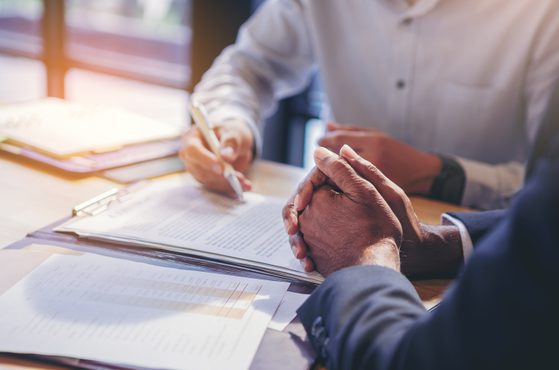Southern Housing v Emmanuel — what landlords need to know about forced access

We explore the judgment and what it means for landlords when tenants refuse access for essential safety checks.
Read more
We make the difference. Talk to us: 0333 004 4488 | hello@brabners.com
AuthorsClaudia Sivori
5 min read
Building Safety, Property & Construction, Housing, Health & Safety, Corporate Defence & Compliance, Public Sector

The Phase 2 Grenfell Report highlighted serious failings across multiple construction and governmental bodies. While the Inquiry’s recommendations are being considered, it’s important to remember that the Metropolitan Police will be doing the same (line by line).
Here, Claudia Sivori explains how prosecutions will be brought on corporate manslaughter and Director’s duties after the findings were published.
Key criminal offences under consideration by the Police include corporate manslaughter and gross negligence manslaughter, as the focus shifts on whether the actions of construction companies, public bodies and those individuals directly involved led to the tragic deaths of 72 people in the fire.
A total of 19 firms or organisations and 58 individuals are currently under investigation by a team of 180 officers and staff who’ve been involved in the police investigation, codenamed Operation Northleigh. The investigation has grown more complex as the Metropolitan Police untangles the network of organisations and companies that — as Counsel to the Inquiry, Richard Millett KC described — wove a “web of blame”.
Following the publication of the Phase 2 Report, the Metropolitan Police will spend an estimated twelve to eighteen months considering its contents before submitting evidential files to the Crown prosecution Service (CPS) for charging decisions. The CPS has stated that charges will not be announced until late 2026, with prosecutions likely to take place the following year. Offences that are being considered again include corporate manslaughter and gross negligence manslaughter, as well as fraud and health and safety. The investigation will concentrate on identifying evidence that may support the most serious charges of corporate manslaughter and gross negligence manslaughter.
The offence is created by S.1 of the Corporate Manslaughter and Corporate Homicide Act 2007. Penalties will include unlimited fines, remedial orders and publicity orders.
For a corporate manslaughter conviction, the prosecution must prove all the following elements:
There’s no upper limit on financial penalties. The Sentencing Council has stated that fines should be large enough to have an economic impact that would make clear to an organisation the importance of operating in a safe environment. However, it’s difficult to imagine that any fine would satisfy the individuals who’ve been profoundly impacted by the disaster.
A remedial order requires the organisation to take specified steps to remedy the breach and any deficiency with regards to health and safety matters in the organisation's policies, systems or practices that led to the deaths.
The court can also make a publicity order which requires that the organisation publicises its conviction for the offence, the amount of any fine and the terms of any remedial order imposed. For large corporations that are less affected by significant fines, adverse publicity is an effective mechanism to drive legal compliance. A damaged reputation and decrease in public trust can take many years to overcome and rebuild. In the meantime, the share price and operating credibility of an organisation will be negatively impacted.
Under the Act, juries will be required to consider breaches of health and safety legislation when determining the liability of an organisation for corporate manslaughter. Health and safety legislation means "any statutory provision dealing with health and safety matters".
Prosecutions will be of the corporate body, as the offence of corporate manslaughter is concerned with corporate liability and so doesn’t apply to individuals. Yet the consequences of the penalties imposed by the court will undoubtedly have a negative impact on the reputations of those who held senior roles in the organisation.
Existing health and safety law and the offence of 'gross negligence manslaughter' continues to apply to individuals. Prosecutions against individuals are taken where there’s sufficient evidence and it’s in the public interest to prosecute.
A defendant will be convicted if the jury can establish that the defendant’s conduct fell so far below the standard that it was something “truly, exceptionally bad”.
To prove the offence, the prosecution must therefore establish all the following elements:
Gross negligence manslaughter is a common law offence and carries a maximum sentence of life imprisonment. If senior individuals understand that they might be held criminally liable for their actions, legal compliance with health and safety regulations will be driven from within the organisation.
The Phase 2 Report underscores decades of systemic failures across Government and the private sector that led to the disaster.
Section 2(1) of the Inquiries Act 2005 prohibits the Inquiry’s Panel from ruling on questions of legal liability, as that falls under the courts' jurisdiction. Section 2(2) allows the Panel to fulfil its functions even if findings or recommendations could imply liability. As a result, the Panel’s conclusions are expected to influence future procurement processes and construction contract negotiations as well as shape further Government policy on fire and building safety in England and Wales.
We’ll be closely following the process of the criminal investigation and the question of to what extent the Government and construction industry will adopt the recommendations of the Inquiry.
If you have any questions about how your organisation may be affected or how to make changes to your policies, systems and processes to remain compliant, talk to us by giving us a call, sending us an email or completing our contact form below.

Loading form...

We explore the judgment and what it means for landlords when tenants refuse access for essential safety checks.
Read more

We provide an overview of key construction law cases from 2025 and explore the practical implications and emerging trends that are shaping the industry.
Read more

We explore how contracting authorities must approach contract variations under the Procurement Act 2023.
Read more